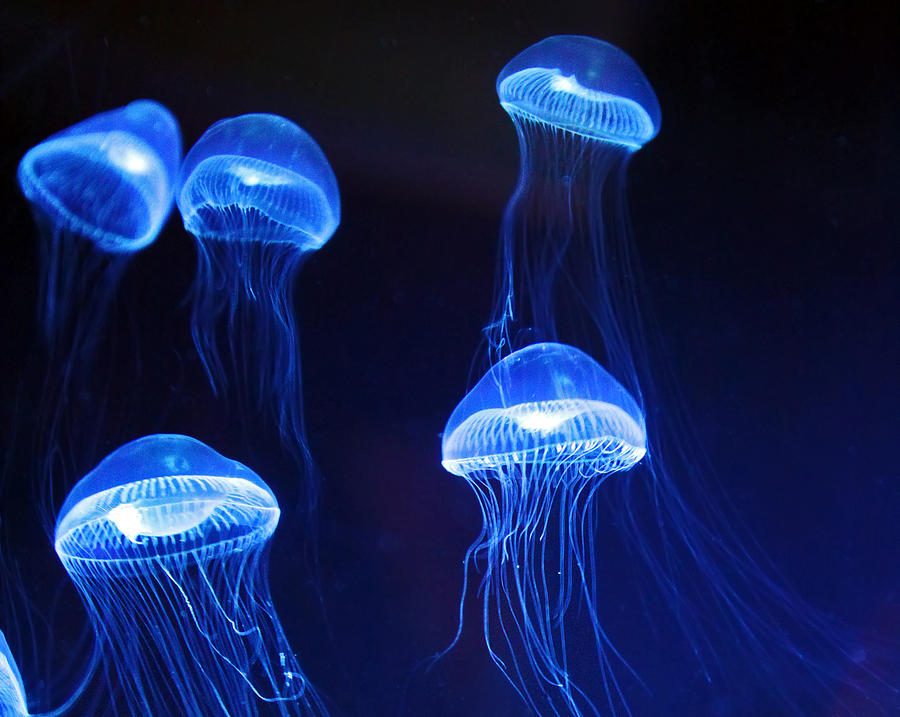Alan Santos, Contributor
May 20, 2019
Blue moon jelly fish are one of the most prettiest floating creatures that you can find North of the Atlantic Ocean and some can reach 1 FT to 2 FT in length. They’re very popular along companies that use aquariums in there Restaurants or Hotels to entertained customers. During there whole life cycle Moon jelly fish only reproduce Two times in there life time.

The moon jelly are mostly composed of water in which accounts for 95% of its entire body. It’s a carnivorous animal in which it feeds on protein-rich aquatic creatures. Its source of food includes minute plankton, fish eggs, larval crabs and few different kinds of shrimp. A moon jelly does not have feet or a tail to make its way around the ocean. Instead, it moves through pulsations carried out within its bell from there body, or through passively riding the seas currents in which they live. The minute animals that it feeds on are oftentimes stung by the moon jelly’s stinging cells which are commonly found lining its tentacles, they sting cannot kill a human , but are powerful enough to trap there prey.Others get entangled in the lining of their ensnared prey, which is then transported along the Moon Jellyfish’s internal canals, ultimately depositing all of the food into its stomach. Such a creature of beauty yet a dangerous predator to move close too so its safe to know they don’t live along the coasts. A moon jelly adult may live for more than 12 months, while their polyp can go on living without their bodies for up to two and a half decades. At present, there are no real threats to the moon jelly population. While some may inflict stings that can be fatal to humans, generally they are very mild, and not considered dangerous at all.They tend to do rather well living in captivity, so long as they are provided with the right conditions. These conditions, of course, include a supply of brine shrimp and other smaller aquatic animals that they can feed upon. Due to there size they can only eat certain kinds of prey.


